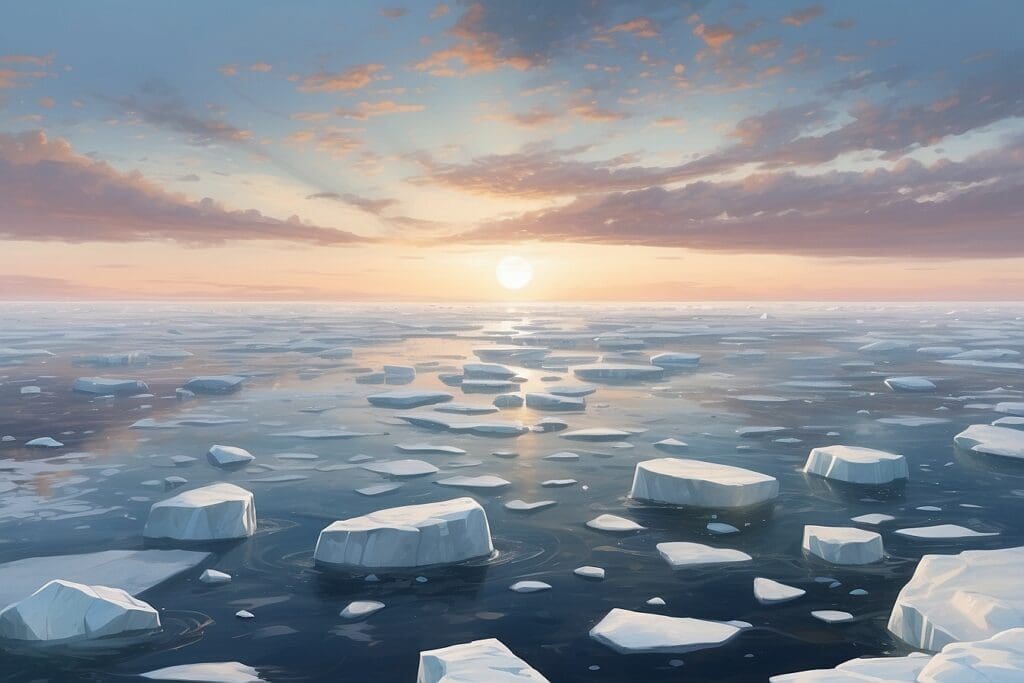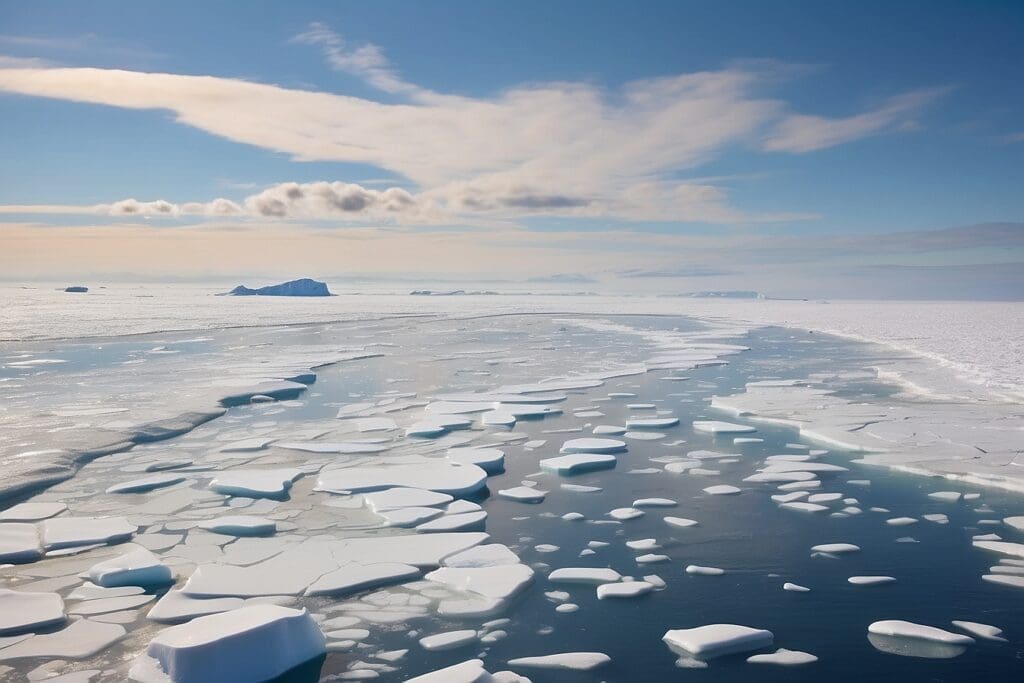Why is sea ice disappearing so quickly? Climatologists and global warming experts knew that global warming was going to melt ice sheets around the world, but they never predicted it would be this fast. The most dramatic examples of ice loss so far have been the Arctic Ocean and Antarctic Ocean. Why would it be in those places? It has to do with just being in the ocean.
In the Arctic, researchers have discovered an interesting ice phenomenon. Although most ocean waters are turbulent, the waters near large ice masses are generally calm, since ice will act as a buffer, dampening most waves into flatness. However, as the summer ice disappears, the waters around the Arctic are becoming more and more like the waters around other areas of the ocean. Unfortunately, that means that the warmer waters underneath are mixing up into the surface, potentially accelerating the ice melt.1
To make matters worse, there could be another reason the Arctic is warming so fast. Ice is naturally reflective, easily apparent by its bright white color.2 About 80% of the sunlight bounces off the surface into the atmosphere, keeping the ice cool.3 As the ice melts, open areas of ocean water become exposed to the sun. Since ocean water is choppy, it’s fairly dark,4 and absorbs about 90% of the sunlight that hits it.5 As the water gets hotter, the surrounding ice melts faster, creating a feedback loop of continually faster and faster melting of the ice.6 These two processes could help to explain why Arctic temperatures are 9 degrees Fahrenheit above what scientists had projected.
In the Antarctic, massive ice loss has also shattered scientific assumptions. One of Antarctica’s giant glaciers is melting at a rate four times faster than scientists had previously thought.7 But, surprisingly enough, most of Antarctica’s ice loss is not due to melting of the ice. In fact, it’s actually melting slower than previously expected. That’s because the Antarctic mostly melts in the summer, while the increase in temperature has taken place mostly during the winter and spring.8 The reason for that, scientists suspect, is because of the hole in the ozone layer, which creates stronger circumpolar winds, cooling the region.9
Then why exactly is the Antarctic losing ice so quickly? Instead of melting, as in the Arctic, ice is breaking off ice shelves and falling into seawater. While the reason behind this is baffling most scientists,10 a few scientists have come up with a working theory: a phenomenon called “infragravity waves.” Infragravity waves are essentially storm waves that have bounced off coastal waters, forming elongated waves that can “echo” off landmasses for thousands of miles. Ice shelves, which can be up to 1,000 feet thick, are normally unaffected by ocean waves, but these elongated infragravity waves are large enough to lift entire ice shelves an up to an inch. Unfortunately, if global warming increases the number of storms around the world, this process may only accelerate, breaking apart the ice even faster.11

Ironically, the melting of the Arctic may be a boon for oil and natural gas explorers. About a quarter of the earth’s unused fossil fuels are estimated to be under the Arctic shelf. Even worse for the environment, the melting Arctic could cause Russia’s large permafrost areas to melt, potentially releasing immense amounts of methane gas.12 The melting Arctic sea ice could accelerate the melting of Greenland’s ice, which would substantially contribute to rising sea levels.13
The most direct victims of ice loss in the Arctic and Antarctic are the animals that live there. In the Arctic, the shrinking habitats are putting a large ecological strain on well-known species such as the beluga whale, arctic foxes, wolverines, and polar bears.14 In the Antarctic, the ice loss has reduced the populations of the emperor penguin, Adélie penguin,15 the Blue Whale, the Humpback Whale, and the Antarctic minck whale.16
The good news is that ocean waves aren’t affecting the glaciers on land. On the other hand, even the relatively small reductions in land glaciers have a much larger and more direct impact on human activity. Decreasing snowpack in land glaciers is still reducing freshwater sources worldwide. In the Himalayas, for example, 90% of the glaciers are melting, creating a potential threat to food security and basic water supplies for over 2 billion people.17
Scientists now predict that the Arctic sea ice could disappear within a few decades.18 However, even if all the sea ice in the world melted, sea levels would rise only by about 4 millimeters.19 The real problem is that the higher temperatures from melting sea ice could facilitate polar land ice melting into the ocean. If Greenland’s ice sheets melted entirely, sea levels would rise another 20 feet, and if Antarctica’s ice sheets melted entirely, sea levels would rise 189 feet.20 Fortunately, the next century or so would only see a small portion of these major ice sheets.21,22 For the sake of endangered animals and humans alike, hopefully these trends can be reversed by strong international action addressing climate change.





